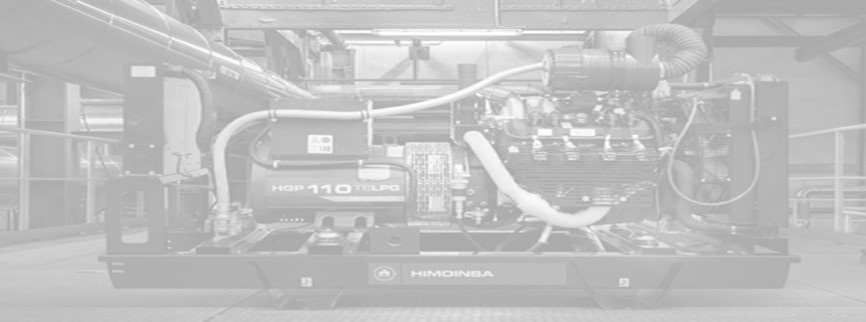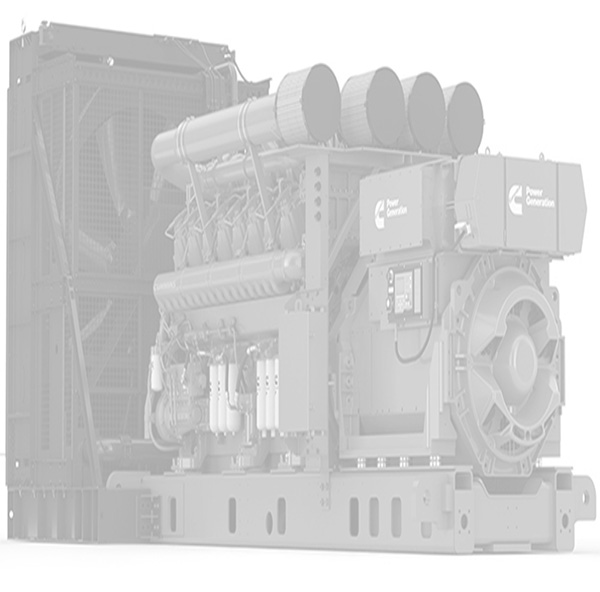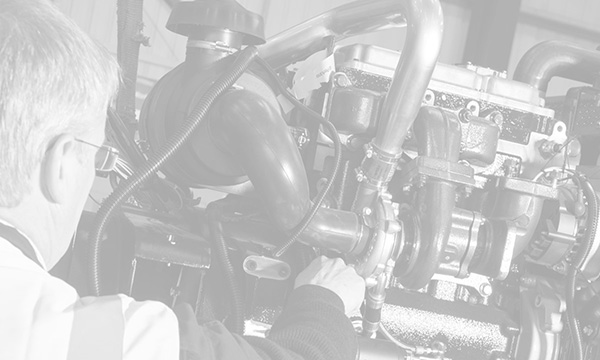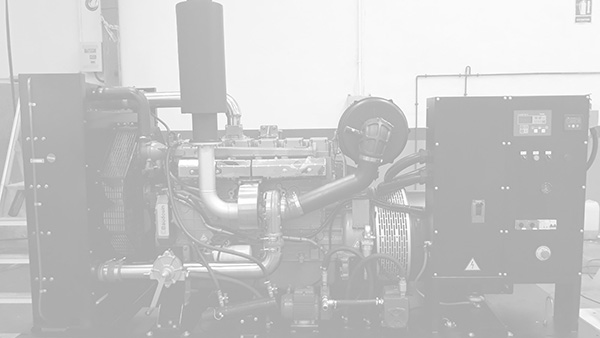Proper diesel electric generator maintenance is essential to ensure its optimal operation for as long as possible.
During use, it is important to closely monitor the exhaust system, fuel system, DC electrical system and engine for possible leaks that could cause hazardous situations.
Standard service and oil changes are recommended every 500 hours. However, some applications may require shorter service intervals, so it is important to have high quality aftermarket services.
Today we share the 7 keys to the correct maintenance of a diesel electric generator:
1. Check lubricating oil level
The first step in diesel electric generator maintenance is to check the engine oil level. This is done by shutting down the generator, at regular intervals and using a dipstick.
Allow the oil in the upper parts of the engine to drain back into the crankcase and follow the manufacturer’s recommendations for API oil classification and oil viscosity. Keep the oil level as close to the full mark on the dipstick as possible, always adding the same type and brand of oil.
The oil and filter should be changed according to the recommended time intervals. Consult with the engine manufacturer for the correct procedures for oil drainage, filter replacement and proper disposal, thus avoiding possible damage or environmental problems.
It is important to use the highest quality and most reliable oils, lubricants and coolants to keep the engine in optimum performance. It is recommended to purchase lubricants that meet the OEM‘s generic specifications.
2. Check the cooling system
The second step for diesel electric generator maintenance is to check the coolant level during shutdown periods, according to the specified interval.
After allowing the engine to cool, remove the radiator cap and, if necessary, add coolant until the level reaches approximately 3/4 inch. Heavy-duty diesel engines require a balanced combination of water, antifreeze and coolant additives.
Inspect the outside of the radiator for blockages and remove any dirt or foreign material with a soft brush or cloth, being careful not to damage the fins. If possible, use low-pressure compressed air or a jet of water in the opposite direction of the normal air flow to clean the radiator.
3. Constantly check the fuel system
It is vital to perform a regular check of the fuel system to keep the diesel electric generator in optimal condition. Diesel fuel can become contaminated and corrode over a period of one year, so it is recommended to regularly use the stored fuel before it degrades.
For proper diesel electric generator maintenance, it is necessary to drain the fuel filters according to the established intervals due to the accumulation of water vapor that condenses in the fuel tank.
If fuel is not used and replaced within three to six months, fuel testing and polishing may be necessary. Preventive maintenance should also include a general periodic inspection that includes checking the coolant level, oil level, fuel system and starting system.
Similarly, it is essential to regularly inspect charge air cooler piping and hoses for leaks, holes, cracks, dirt and obstructions that may block fins or loose connections.
Some engines used in standby generator set applications have had some problems related to diesel fuel. While the engine maintains its mechanical properties, it can lead to problems related to diesel fuel quality.
In addition, sulfur reduction reduces lubrication, which eventually blocks fuel injection pumps.
4. Test the batteries
Weak or discharged starting batteries are a common cause of backup power system failures. It is critical to keep the battery fully charged and in good condition. This is accomplished through periodic testing and inspection to know its current condition and to avoid any problems when starting the generator.
These are the key steps to follow for diesel electric generator maintenance in relation to the batteries:
- Battery testing. It is not enough to check only the output voltage to know if the batteries can provide sufficient starting power. As they age, the internal resistance increases, so the voltage under load must be measured. Some generators perform this test automatically at startup, while others require the use of a manual battery load tester to certify their condition.
- Cleaning the batteries. Keep the batteries clean with a damp cloth in case of excessive accumulation of dirt. If there is corrosion around the terminals, remove the cables and wash the terminals with a solution of baking soda and water (one part baking soda to four parts water). Prevent the solution from entering the cells and, when finished, wash the batteries with clean water. After reconnecting the cables, apply a thin layer of petroleum jelly to the terminals.
- Specific gravity check. On open-cell lead-acid batteries, use a battery hydrometer to measure the specific gravity of the electrolyte in each cell. A fully charged battery should have a specific gravity of 1.260. If the reading is less than 1.215, the battery needs to be charged.
- Checking the electrolyte level. On open-cell lead-acid batteries, check the electrolyte level every 200 hours of operation. If it is low, fill the battery cells to the indicated level with distilled water.
5. Perform regular motor exercises
It is important to perform regular engine drills to keep the parts lubricated and ensure proper diesel electric generator maintenance. This prevents oxidation of the electrical contacts, consumes fuel before it deteriorates and ensures reliable engine starting.
It is recommended to exercise the engine at least once a month for a minimum of 30 minutes, charging it to no less than one third of its nameplate capacity.
6. Keeping the engine clean
It is of great importance to keep the engine clean and in good condition to easily detect and fix problems such as oil leaks. A regular visual inspection allows you to verify that the hoses and belts are in good condition. In addition, frequent checks help prevent the presence of wasps and other insects in the equipment.
Remember that the more it is used, the more diesel electric generator maintenance needs to be performed. However, a generator that is not used regularly does not need such thorough and regular care.
7. Inspect the exhaust system
It is imperative to check for leaks along the exhaust line, especially at connection points, welds and joints. If any leaks are found, they need to be repaired immediately by a qualified technician. Ensuring that your generators are serviced regularly is a fundamental aspect of diesel electric generator maintenance.
In addition, it is advisable to perform diesel electric generator maintenance service at least 24 hours before using the generators.
For example, for standby generators, it is suggested to perform a service every 150 hours on average. However, if the generator is in constant use, the service hours will increase more rapidly and require more regular intervals.
American Petroleum is the diesel supplier for your generator
Finally, remember that for diesel electric generator maintenance, it is very important that your generator has the necessary volume of fuel to operate efficiently. Don’t forget to call American Petroleum at 787-794-1985 or write to us at info@americanpetroleumpr.com.






